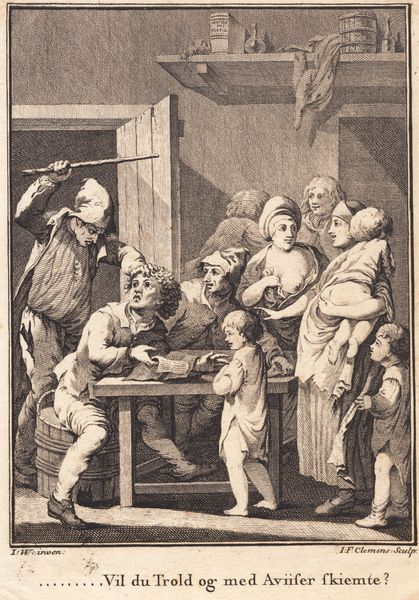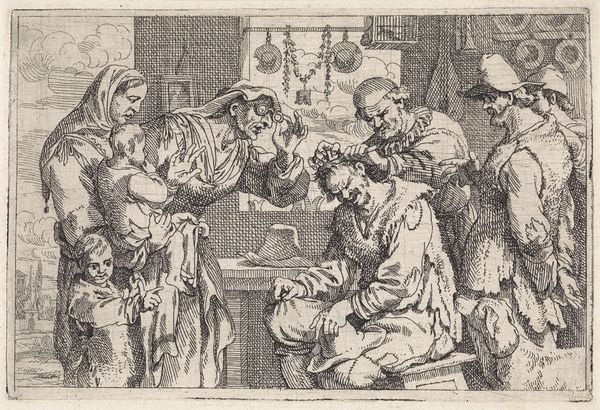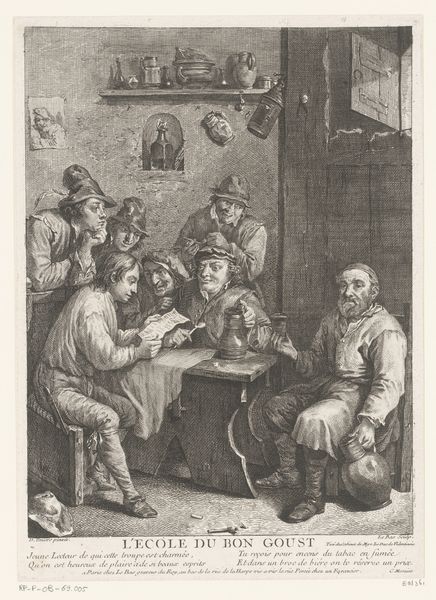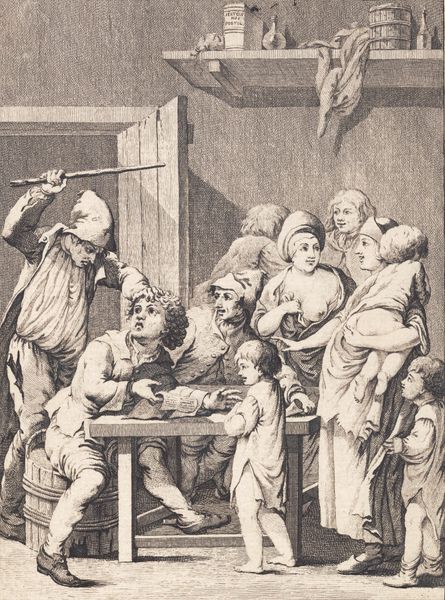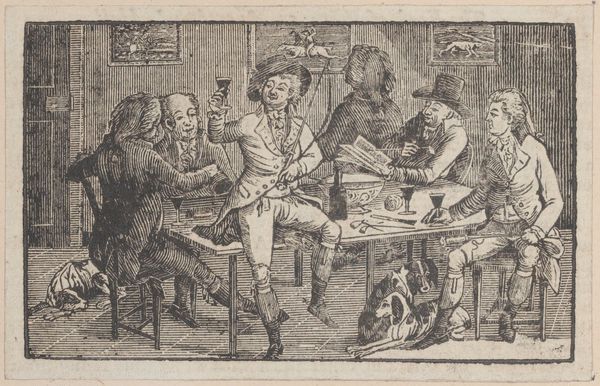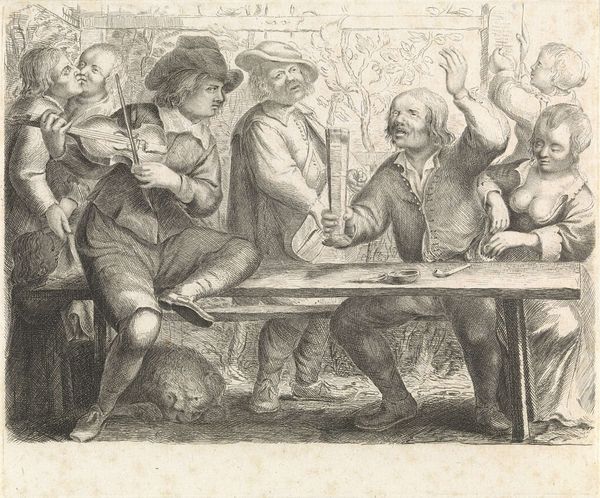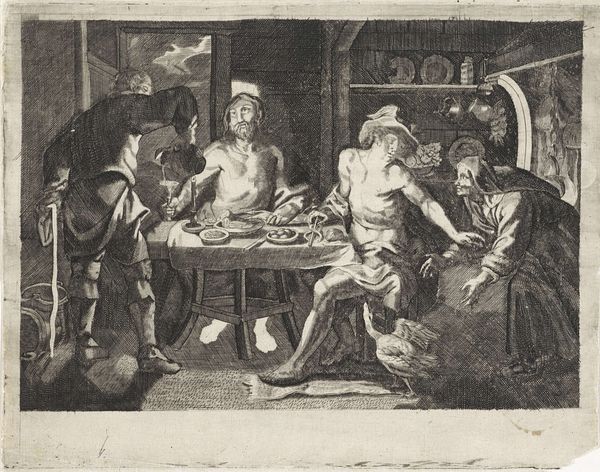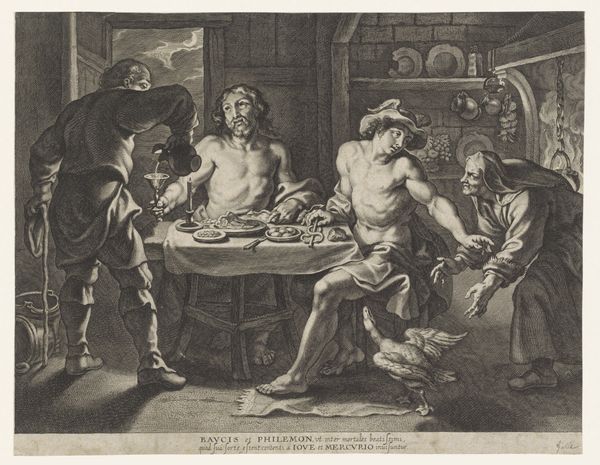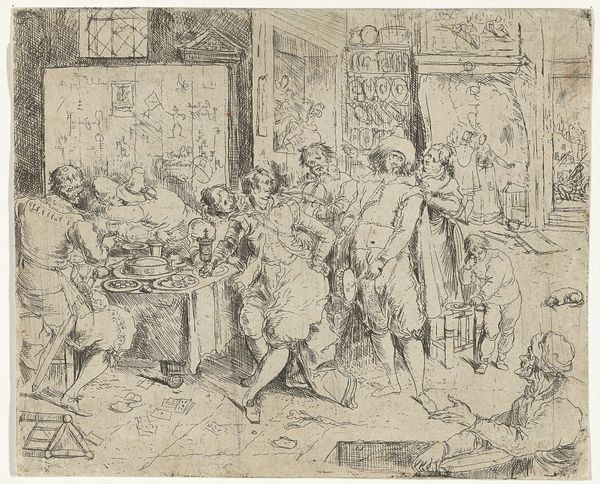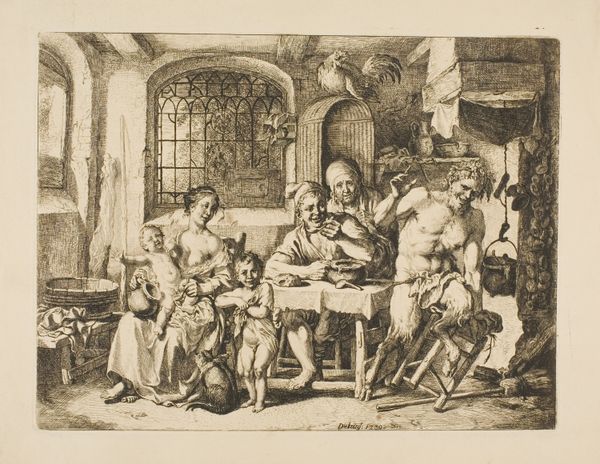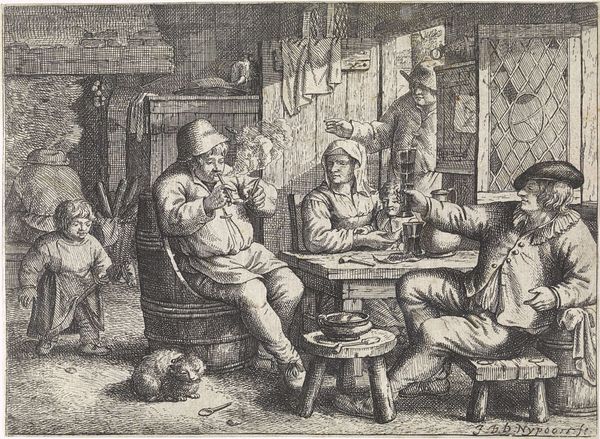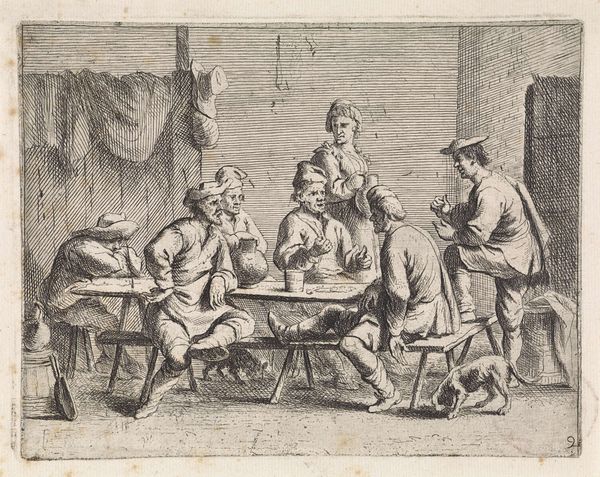
intaglio, engraving
#
dutch-golden-age
#
intaglio
#
old engraving style
#
figuration
#
group-portraits
#
line
#
genre-painting
#
engraving
Dimensions: height 332 mm, width 422 mm
Copyright: Rijks Museum: Open Domain
Jan van der Bruggen created this print, "Card Players and a Urinating Man," during the Dutch Golden Age, a time of great economic and cultural prosperity for the Netherlands. This genre scene, with its peasants drinking, gambling, and relieving themselves, offers a glimpse into the social life of the time, but it is also a statement on social structures. Tavern scenes were common in Dutch art. Artists like van der Bruggen were able to make a living selling these works at markets, fairs, and directly to taverns and individuals looking for affordable art. The unidealized depiction of working-class life might be seen as critical of social norms in this newly formed Republic. It is a far cry from the heroic images of the ruling class and a reflection of the changing role of art in Dutch society. To understand this print better, we can look into archival documents, social histories, and the records of art markets and artists' guilds. These sources help us comprehend the public role of art and the social conditions that shaped artistic production in the 17th-century Netherlands.
Comments
No comments
Be the first to comment and join the conversation on the ultimate creative platform.
